Ace - Greyhound Portrait
Friday, September 25, 2009
Apologies for such a long post, but this portrait is a great one to use for explaining the process of my "Paintings with Petzazz" pieces in watercolor on Yupo. At least I've included lots of images to break up the text.

"Ace" - greyhound, watercolor on Yupo, 8" x 8"
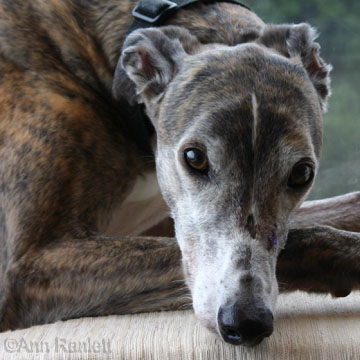
This is the cropped photo of Ace that I used for reference. Many of the petzazz portraits are in square format, I'm not exactly sure why I started doing that, but I like the way it looks.
I painted Ace's portrait in watercolor on Yupo. It was fun and challenging at the same time. My petzazz portraits are never intended to be photorealistic and exact. And they're always done in a limited palette of bright colors. I think of them as "interpretive" portraits, which is good, because Ace has a brindle pattern and I had no intention of duplicating that exactly. For petzazz portraits, I want the proportions to be accurate and the main markings as well, but my portrayal of the subject is much looser than it would be if I were using pencil or ink on scratchboard. With either of those mediums, I would've duplicated the brindle pattern much more closely.
A big reason for the "interpretive" aspect is the nature of the Yupo surface. Yupo is a synthetic paper made of polypropylene. It has a very slick surface. The water in the paint is not absorbed into the Yupo, it has to evaporate. This is great because the paint retains its intense color and you end up with some really interesting patterns and watermarks (there's a lot of of watermark action in the white areas of the detail of the painting below).
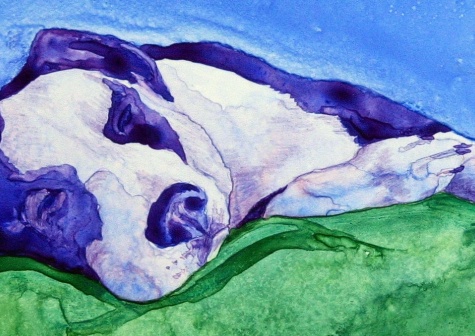
It's also great because the paint can be easily lifted from the surface (for making eye highlights, whiskers). But not so great when you don't want it lifted. Corrections are very difficult because there's an obvious hard edge where the paint that was already laid down has been moved around. You can make corrections by lifting out an entire section with a wet brush; if that section is isolated from the rest of the painting, you're good to go. And if you're just not at all happy with how it's going, you can wash the whole thing off in the sink and start over. Only a few of the strongly staining watercolors are likely to leave a hint of color.
When I work with Yupo, I plan things as best I can and then just let the rest of it happen.
I didn't scan the painting as I worked on it, but I did take two photos along the way. The first photo shows the background, Ace's eyes & nose and the lightest areas of his ears and face. You can't see it, but there are pencil lines on the Yupo. Using a light box, I traced the main features from the photo onto the Yupo. Including some of the brindle pattern - the main "tracks" and patches.
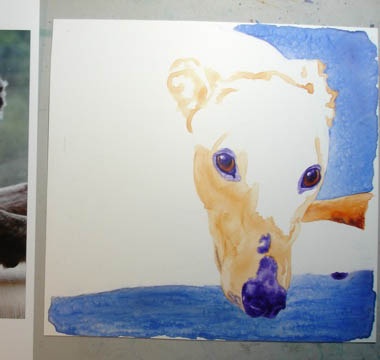
I always put in the background first and I pretty much let the paint/Yupo do what they want. I may push the paint around a bit while it's wet or mist it with a spray bottle for texture, but I don't try to make the background look like anything in particular. It's just there to anchor the subject.
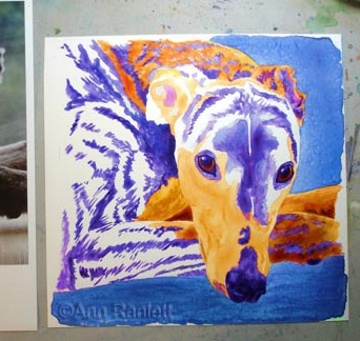
Here I've painted in the main purple stripes, some of the orange stripes on his neck and leg and done more work on his face.
I make lots of "judgement calls" as I go along. Since I'm using a limited color palette (orange, yellow, blue and purple, in this case) I have to decide what features will be represented by which colors or blends of those colors. I want the colors to stay vibrant so I try not to mix complimentary colors too much or that brightness is lost.
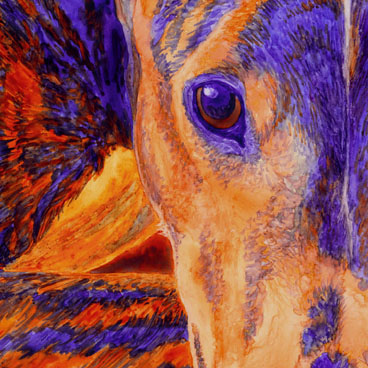
You can see on his face that I used a mix of light orange and light purple to get "grey". On his body, I used dark orange and dark purple to get a dark mix and blend some of the brindle lines together.
I use Daniel Smith watercolors - Ace's oranges are a mix of new gamboge, quinacridone sienna, quinacridone burnt orange and a bit of permanent orange. His purples are a mix of rose of ultramarine, french ultramarine and carbazole violet. The background is cobalt blue and french ultramarine. I mix paint on a separate scrap of Yupo and just keep mixing these colors as I go along, changing the ratios and water content along the way, depending on what part I'm painting - again "judgement calls".
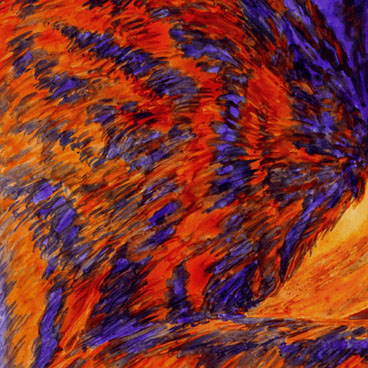
For the brindle pattern I laid down stripes of purple and orange. Then when they were dry, I came back in with a small damp brush and alternated lines of purple and orange to overlap the pattern and enhance the brindle effect. The existing paint gets pushed around as I do this, blending the colors a bit more to help make it cohesive.
I'm really pleased with the way this painting turned out - to be honest, I wasn't exactly sure how I was going to handle the brindle, but I just started and figured it out as I went along. A good thing too, because I have two more paintings of lovely striped greyhounds on my commission list!



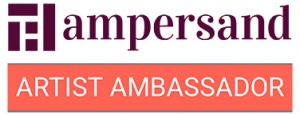

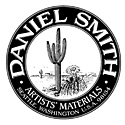


1 comments:
What a great technique you've done with this greyhound. Hats off!
Post a Comment